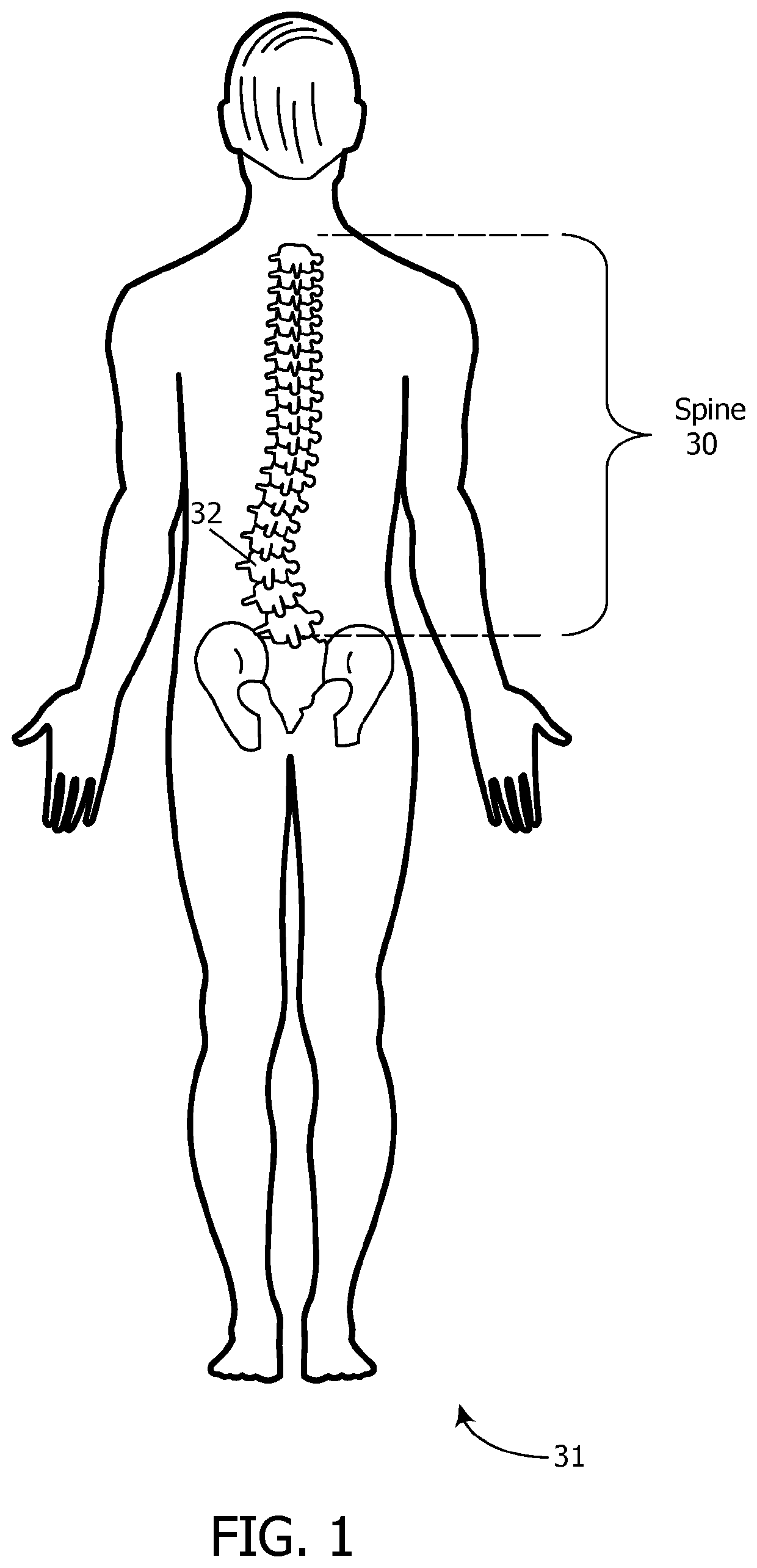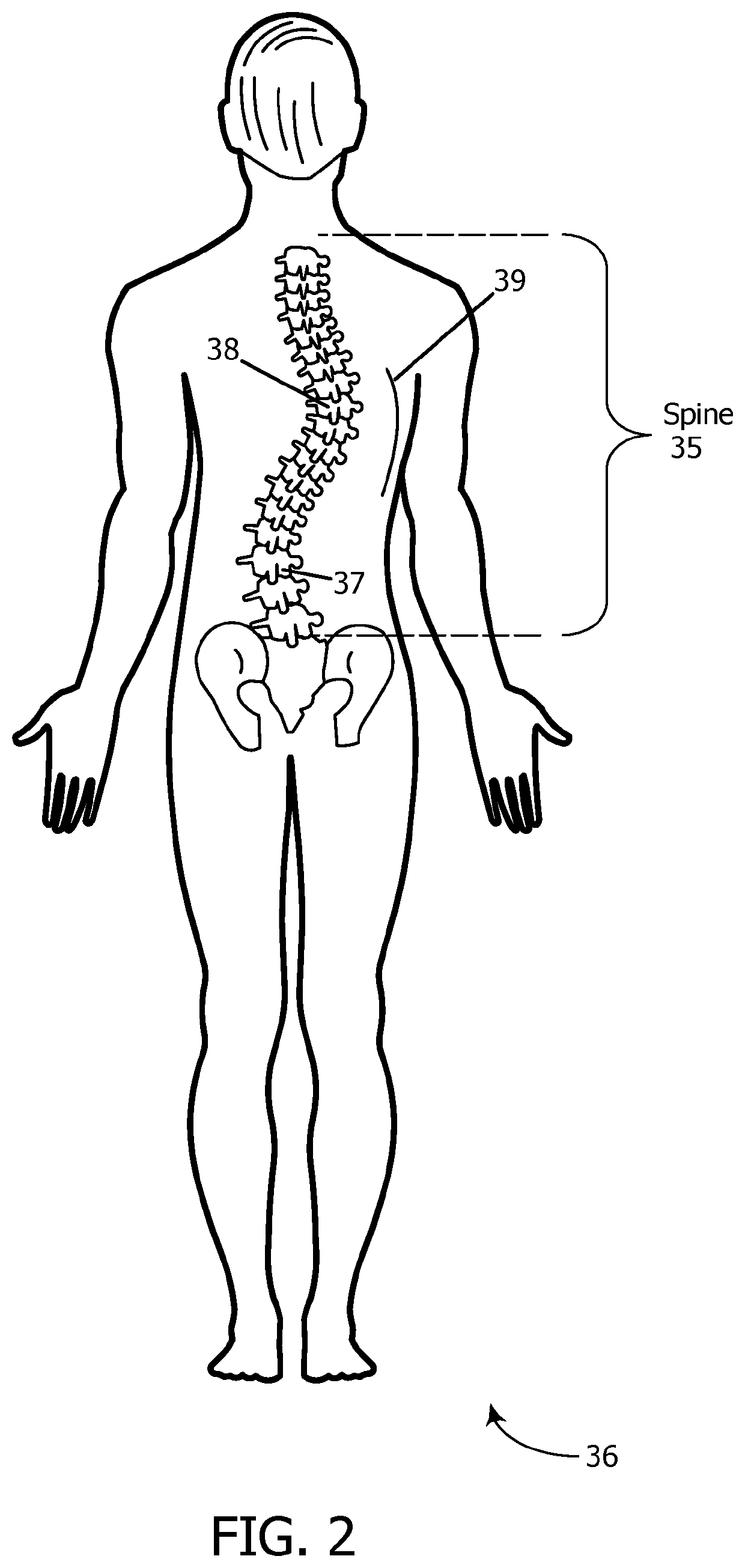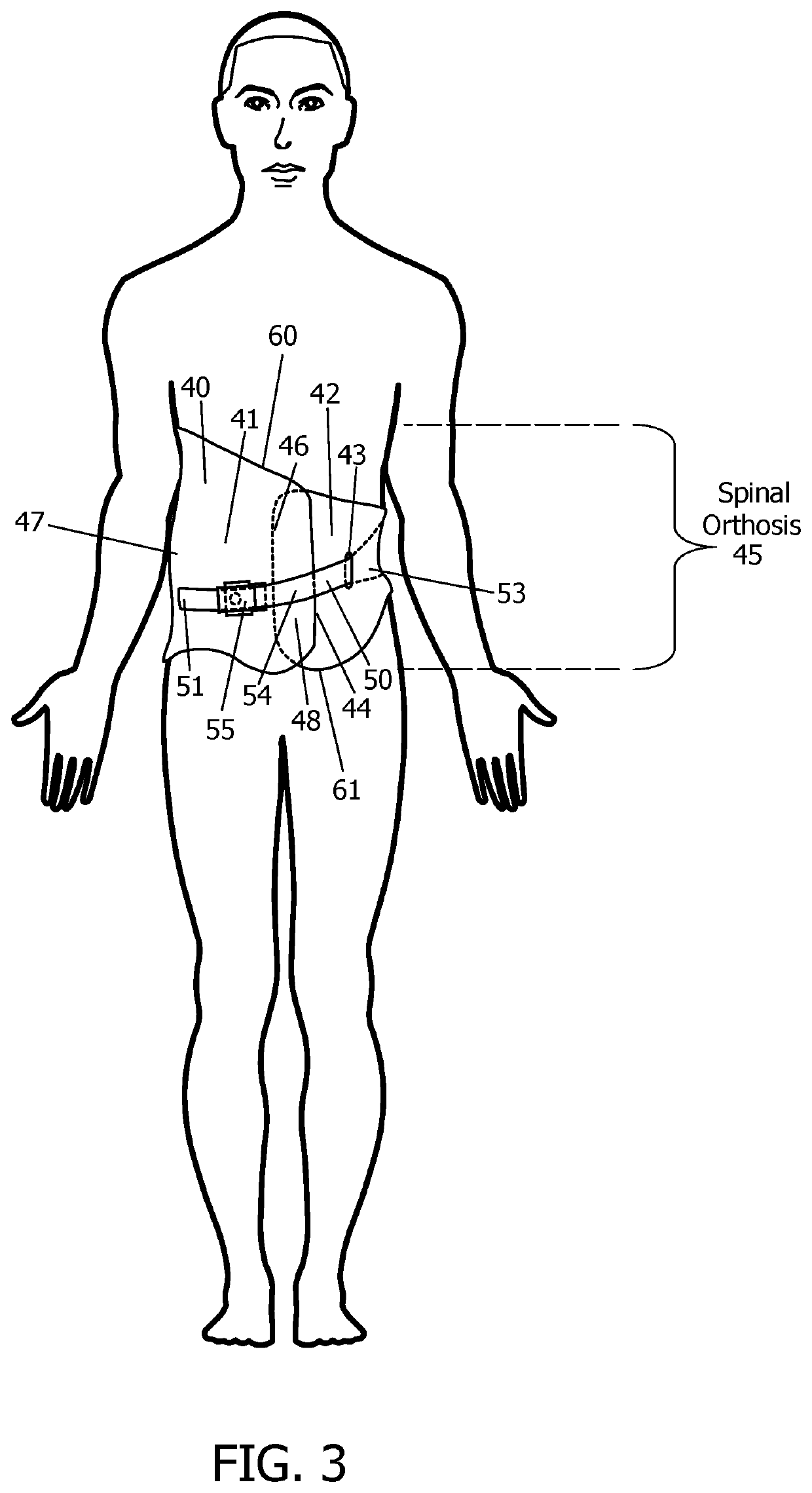Spinal orthosis
a spine and orthosis technology, applied in the field of spine orthosis, can solve the problems of little, if any, improvement in spine alignment when applied, design limitations and shortcomings, and limitations in the degree to which orthoses can improve alignmen
- Summary
- Abstract
- Description
- Claims
- Application Information
AI Technical Summary
Benefits of technology
Problems solved by technology
Method used
Image
Examples
Embodiment Construction
A. Advantages
[0049]The spinal orthosis according to the present disclosure presents an advantage over prior art in harnessing the inherent properties of a low profile brace shell, specifically the property of storing elastic potential energy when bent, to create and maintain corrective dynamic tension on at least one strap. The configuration of this spinal orthosis requires only a minimal number of individual components exposed on the outer surface of a single piece brace shell to maintain dynamic corrective forces on the wearer's torso. The dynamic corrective forces are maintained during changes in body position, torso dimensions, and across a range of movement enabling the device to apply corrective forces on the body after a degree of correction has previously been achieved without the need for adjustment to the brace shell or hardware thereon.
[0050]The spinal orthosis presents these advantages while maintaining a minimal number of straps and, with no additional hardware purposed...
PUM
 Login to View More
Login to View More Abstract
Description
Claims
Application Information
 Login to View More
Login to View More - R&D
- Intellectual Property
- Life Sciences
- Materials
- Tech Scout
- Unparalleled Data Quality
- Higher Quality Content
- 60% Fewer Hallucinations
Browse by: Latest US Patents, China's latest patents, Technical Efficacy Thesaurus, Application Domain, Technology Topic, Popular Technical Reports.
© 2025 PatSnap. All rights reserved.Legal|Privacy policy|Modern Slavery Act Transparency Statement|Sitemap|About US| Contact US: help@patsnap.com



